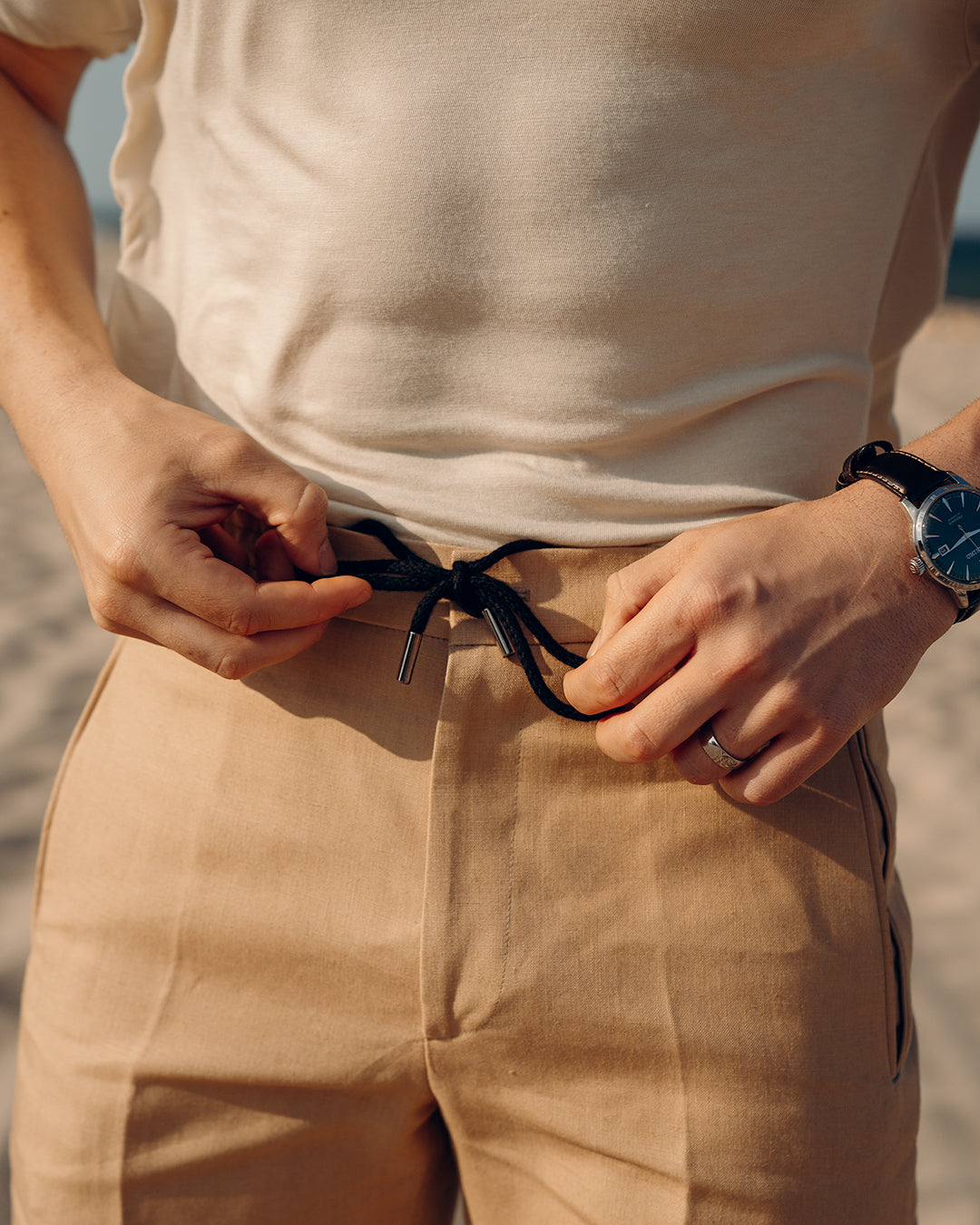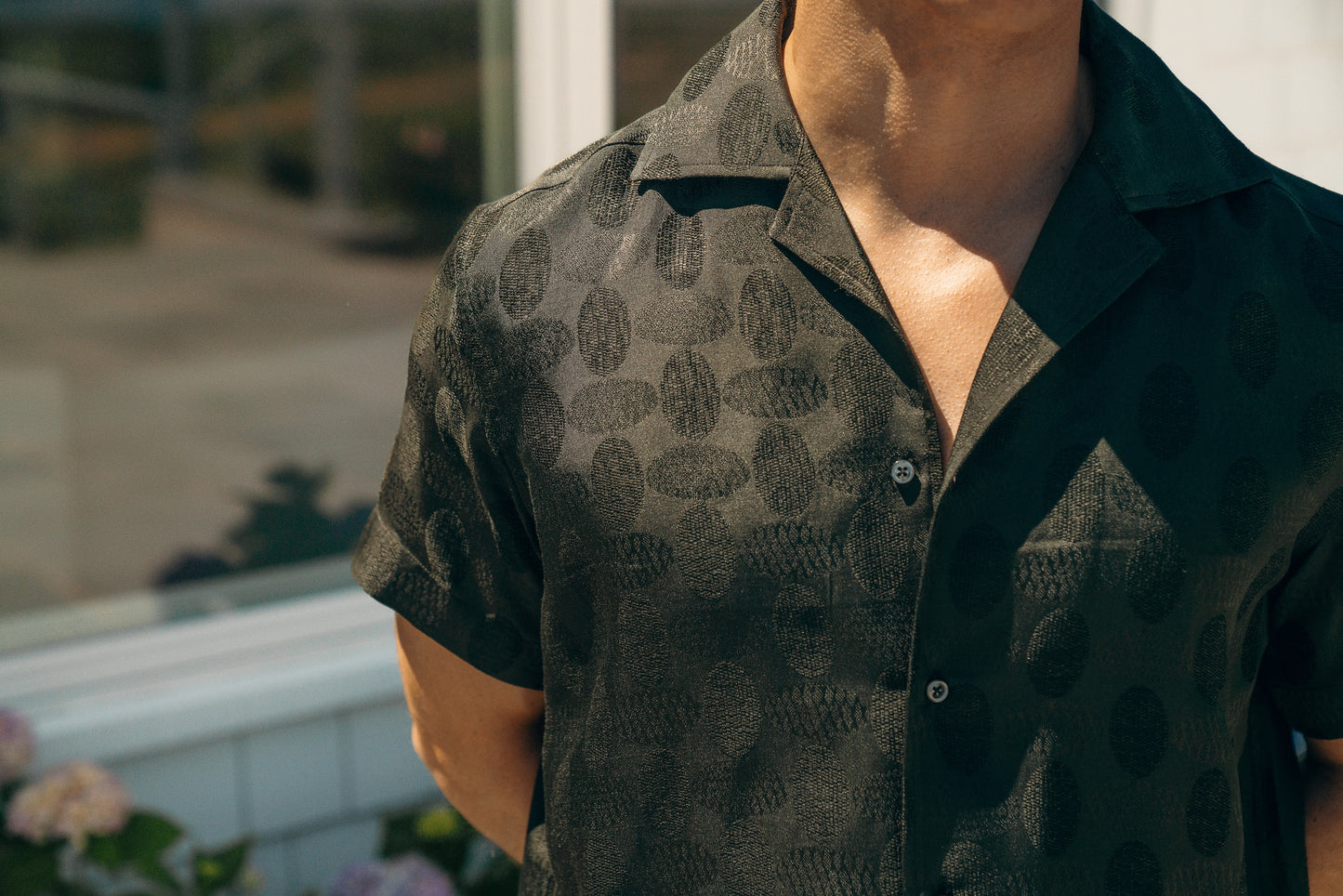
Madras cotton is defined not only by its texture and look, but also by the way it's made or constructed. Thus, though the madras cotton of today differs slightly in look and feel from the cotton woven in Madras, India 5,000+ years ago, there is little doubt in historians' minds, given the similarities and technique and process, that madras cotton can be traced back to as early as 3,000 B.C.
At the time, what can more or less be called madras' “ancestor” was a gauzy, hand woven cotton that was spun from karvelem patta, the tip skin of ancient trees and when African and Middle East importers saw this cotton in the 12th century, they recognized its potential value and exported it to their homeland, where it was then made into headpieces.
In the 1500’s, a more elegant madras cotton began being printed, by hand, with designs, often floral or religious, and garments made from this newly created madras became the everyday garb of villagers in Madras. That was until the 1800s, when plaids, often called Madrasi checks, came into fashion and became the go-to attire for villagers. Interestingly, while not confirmed, there is some speculation that the sudden pivot to plaid was a of the villagers' fondness for the tartan plaids of the Scots that occupied southern India around that time.
During the Age of Exploration, when Europeans first happened upon India, they, like the African and Middle Eastern importers of the 12th century, were entranced by the locally made madras cotton. Madras cotton - light, delicate, well made - was transported by the East India Company, in its undyed form, to Europe in the 17th and 18th centuries and soon became a prized, desired, valuable good in Europe. In fact, the popularity of madras cotton soon became an issue in England and France, where domestic fabric makers saw precipitous declines in demand for their product as a result of the introduction of madras. Textile tycoons in France and England began calling on their governments to restrict the supply of madras through the implementation of tariff and trade restrictions.
Throughout the rest of the 1800s, madras, as well as other fabrics from India, continued to be popular in the West and they even played a role in the Civil War, when Indian cotton went from being thought of as a luxury commodity to a necessary good.
Madras however, was first introduced to the American general public as early as 1897, when the Sears catalog included madras shirts. And demand for these shirts was steady and strong, with the NY Times citing madras shirt shortages in late 1919.The Hathaway Shirt Company led the madras movement in the U.S. and though their goods gained popularity and prominence among the New England elite, who wore madras as resort wear, including in the form of swim trunks, the mainstream public had yet to fully embrace madras, particularly due to the fact that it bled and faded in the sun. Customers hated this and clothiers were inundated with returns; clothing manufacturers sought to change this perception of the fabric and if not for the work of David Ogilvy, a legendary advertising exec who was hired to spearhead this initiative, the fabric might not be found in America at all.
Oglivy was able to convince customers that the “bleeding” madras and alterations to color were part of the cotton's “exotic” charm and soon, men in country clubs across the country sported their madras garments on weekend afternoons. Ultimately, madras became a symbol of the post WWII leisure class and when the baby boomer generation began to rebel, they did so by mocking their parents' generation and wearing madras.
The Reagan era and conservatism brought madras back into the spotlight after a period of time, the 1970s, when it had been forgotten.
Since that time, madras has been on the ins and outs of mainstream public, but 5,000+ years later it has maintained its place in wardrobe and hearts around the world.




